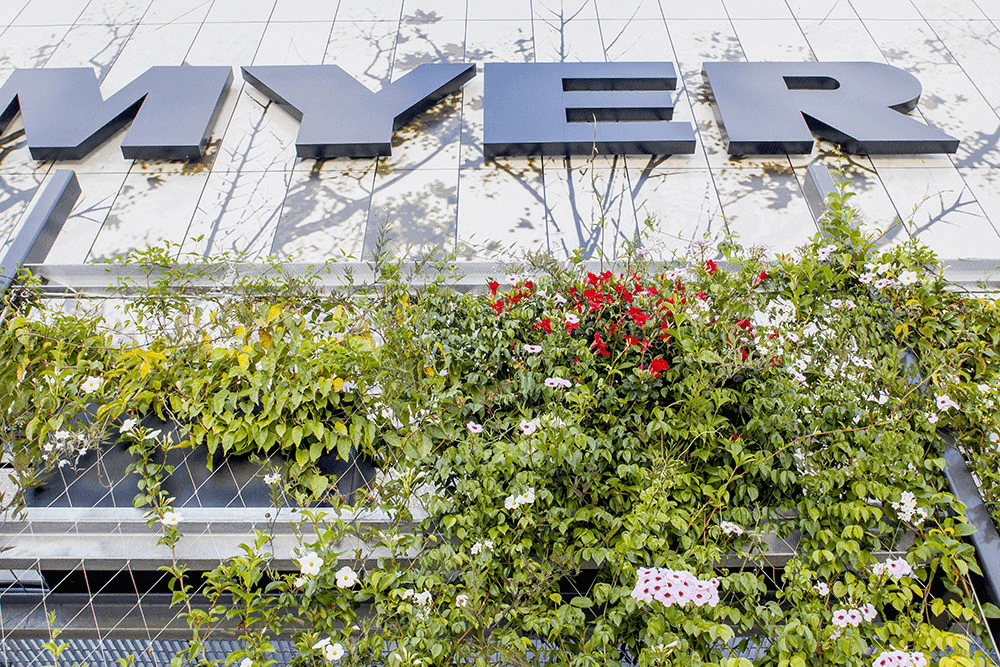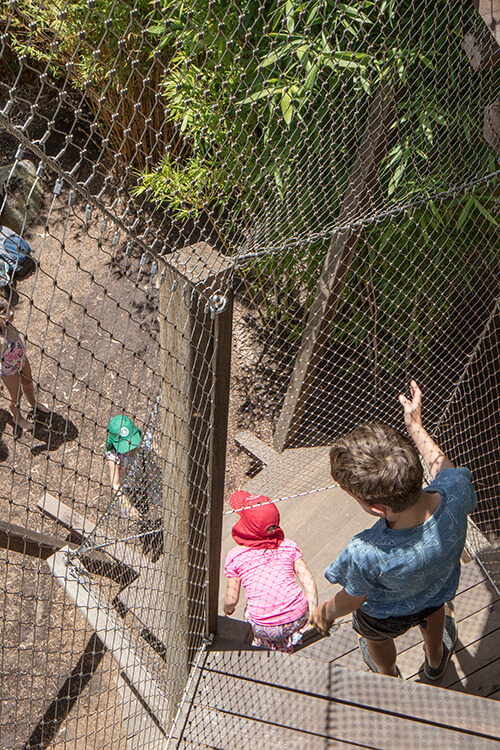Stainless steel wire mesh might seem more practical than inspiring at first look. But mesh is one of the best materials around for projects that require a blend of function and artistry.
While it’s often used for fall protection and safety, it can also be installed to support artistic or green facades and create sleek curved barriers or balustrades – and much more.
Jakob’s Webnet mesh is constructed from 316-grade stainless steel, and comes in an array of wire sizes, aperture openings, and customised shapes to suit your purposes.
Here are some of the main reasons you might use stainless steel wire mesh in your next architectural project.
1. Lightweight and quick to install
Depending on the configuration, Webnet mesh can weigh as little as 300g per square metre. This makes it easy to transport and quick to install. It can also help to reduce project costs while meeting time deadlines.
In addition, Webnet is ideal for creating building facades, as it means lighter loads are imposed on the structure.
2. Aesthetic, transparent qualities
Webnet’s light, thin profile means it all but disappears into the background in projects where it plays a supporting role. This transparency makes it ideal where the client wants a light-filled and airy environment or is keen to make the most of available views.
In addition, virtually no sub-framing or heavy anchoring is required. The fixings used are light, small and unobtrusive, and can be concealed from view if required.
3. Robust, durable and low maintenance
Made from 316-grade stainless steel, Webnet is remarkably robust and long-lasting. It can handle large loads while supporting complex geometric shapes at the same time.
Being UV and weather resistant, the maintenance requirements of the mesh are also extremely low – unlike some materials such as glass that may need constant cleaning, repairs or replacement.
4. Stainless steel wire mesh is highly malleable
One of the beauties of Webnet is how it can be made into such a variety of shapes. It can, for instance, be formed into 3-D cylinders, spheres or funnels.
This also means it can wrap around structures that are asymmetrical, quirky or odd in shape.
Suitable projects for stainless steel wire mesh
One of the key drawcards of mesh is its versatility. It can be used for a wide variety of applications.
Green and artistic facades:
Webnet can make an ideal substrate for greening, either alone as a plant trellis or in conjunction with wire rope or cables. It can also be used as a support screen for planter boxes or for decorative elements or shapes.
Examples:
- Westfield at Bondi Junction – in this green facade project, diamond formation mesh was installed to support climbing plants. Pre-assembly meant the mesh and posts could be installed in a single night.
- Randwick Racecourse decorative facade – Webnet was installed on the carpark for the dual purposes of fall protection and to support over 5,000 decorative discs by Shapeshift.

Bridges and barriers:
Webnet can provide the safety required for footbridges and balconies while also contributing to architectural design.
A typical example is the Albert Tibby Cotter pedestrian bridge, where wire mesh was installed to create safety barriers while contributing to the structure’s curved design.
Playgrounds:
When used in playgrounds, wire mesh showcases its malleability. It can be draped over odd-shaped structures almost like a piece of fabric.
An example is the Ian Potter Wild Play garden in Sydney, where 40mm-aperture Webnet wraps around the unique climbing tower. Safety requirements are met, without hindering views and free play.
If you have a project in mind that could benefit from the use of stainless steel wire mesh, don’t hesitate to get in touch!






































